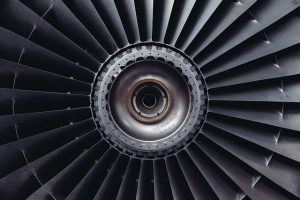
Airbreathing engines are common in the aviation industry. With the exception of electric and hybrid models, most aircraft engines use air for combustion. They mix and fuel in an enclosed space known as a combustion chamber, after which they ignite it. While some airbreathing engines are naturally aspirated, however, others leverage a supercharger or turbocharger.
What Is a Supercharger?
A supercharger is a type of mechanically driven compressor that forces air into a piston engine. It’s designed to compress the air before it enters the engine’s combustion chamber. By doing so, superchargers can squeeze more air into the combustion chamber, resulting in a more powerful ignition.
Most superchargers are connected to the crankshaft via a belt or gear. Therefore, their speed is directly related to the engine’s RPMs. The higher the RPMs, the faster the supercharger’s impeller will turn. And the faster the impeller turns, the more air will enter the combustion chamber.
What Is a Turbocharger?
A turbocharger is a type of exhaust-driven compressor that forces air into a piston engine. Like a supercharger, it compresses the air so that more air molecules enter the combustion chamber.
Both superchargers and turbochargers are forced induction devices. Piston engines can be classified as naturally aspirated or forced induction. Naturally aspirated piston engines rely on atmospheric pressure to suck air into the combustion chamber. Forced induction piston engines, on the other hand, use a supercharger or turbocharger.
Differences Between Superchargers and Turbochargers
While they are both forced induction devices, superchargers and turbochargers aren’t the same. One of the key differences between them is their drive type. Superchargers are mechanically driven, whereas turbochargers are exhaust driven.
Because they are mechanically driven, superchargers offer instant response. The speed of the impeller will change in real time as the engine’s RPMs change. Turbochargers, in comparison, have a slight delay.
Turbochargers are typically more fuel efficient. Turbochargers are driven by the engine’s exhaust gases, which is considered a type of waste energy. Rather than allowing this energy to go to waste, it’s used to turn the turbocharger and boost the engine’s power and performance.
Turbochargers can also handle higher altitudes. Superchargers have a somewhat limited ceiling. At high altitudes, they become very inefficient. Turbochargers, though, can handle high altitudes while maintaining their efficient properties.
Finally, superchargers are typically easier to service. They are often mounted to the engine chassis, which makes them easier to access and service, whereas turbochargers are integrated into exhaust systems.



